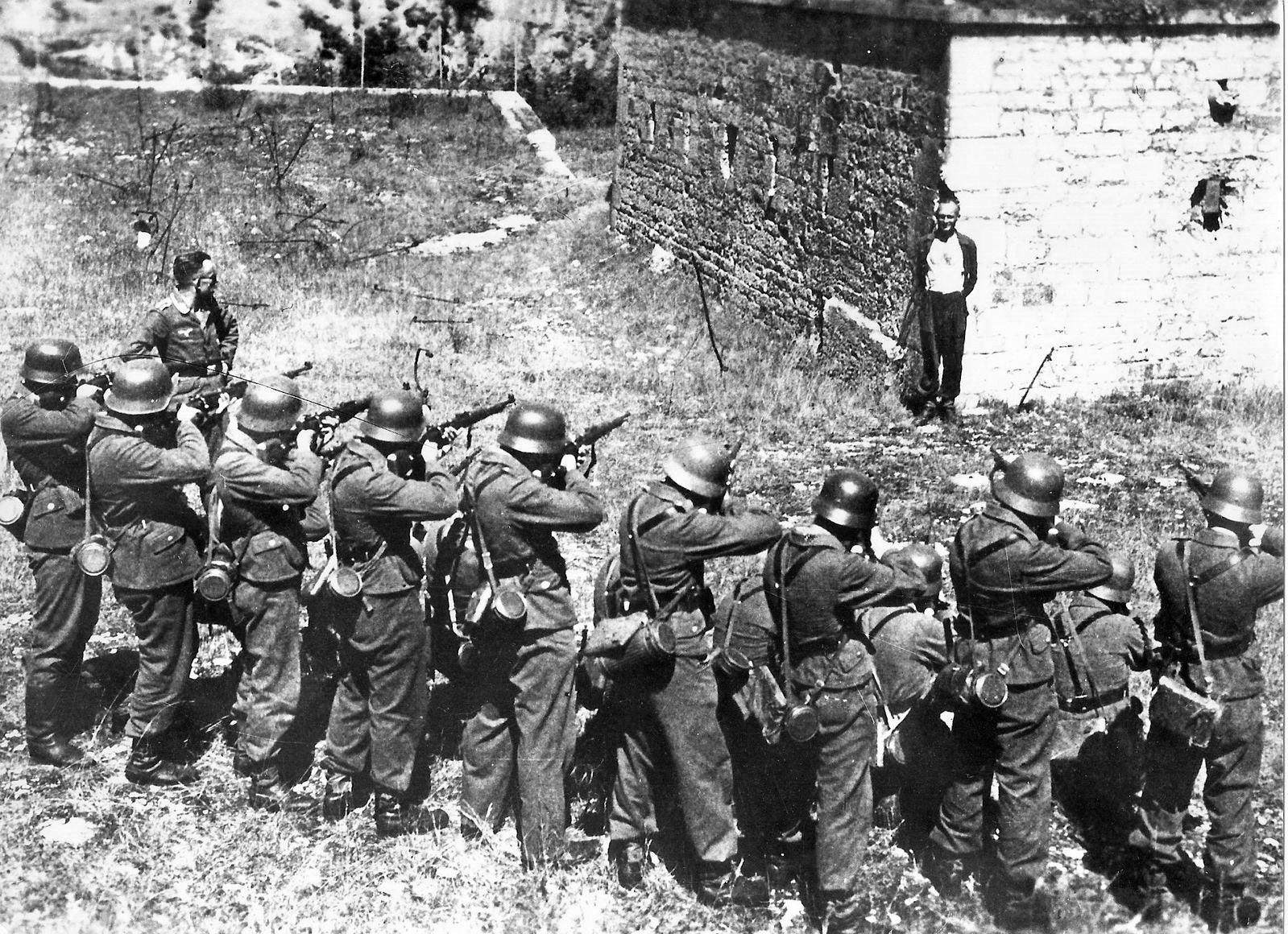The Operational Situation, August 15 1944

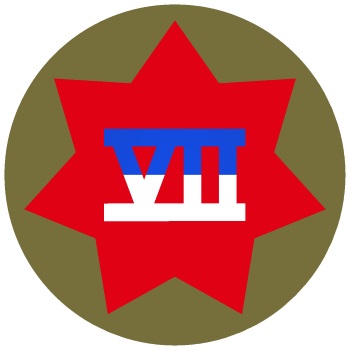
 The strain on the German Army began to show by June 13, when the US VII Corps stretched the German line to the breaking point, severing the Cotentin Peninsula on June 18 and advancing north to capture the port of Cherbourg. The Allied armies in Normandy continued to grow in strength and experience as they wore down the Germans, who still ably defended the difficult Bocage terrain.
The strain on the German Army began to show by June 13, when the US VII Corps stretched the German line to the breaking point, severing the Cotentin Peninsula on June 18 and advancing north to capture the port of Cherbourg. The Allied armies in Normandy continued to grow in strength and experience as they wore down the Germans, who still ably defended the difficult Bocage terrain.
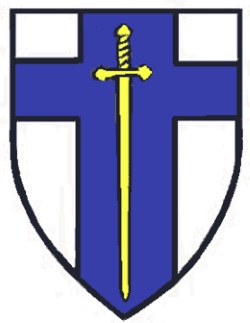
 On July 18, the US 1st Army captured Saint-Lo, while the British Second Army engaged most of the German armored divisions near Caen. What was needed was one powerful thrust to break through the German line. That occurred with Operation Cobra on July 25, 1944, when the US 1-A broke through the positions of the German 7.Army ably exploiting the breakout and reaching Avranches on July 31.
On July 18, the US 1st Army captured Saint-Lo, while the British Second Army engaged most of the German armored divisions near Caen. What was needed was one powerful thrust to break through the German line. That occurred with Operation Cobra on July 25, 1944, when the US 1-A broke through the positions of the German 7.Army ably exploiting the breakout and reaching Avranches on July 31.

 On August 1, the Allied armies reorganized into two army groups. Gen Montgomery commanded the 21-AG, consisting of the Canadian First and the British Second Armies, while Gen Omar N. Bradley commanded the US 12-AG, with Gen Courtney Hodges’s US 1-A and Gen George S. Patton‘s US 3-A. Patton’s 3-A swept across Brittany in a vain attempt to secure a usable harbor and then swung east against minimal opposition.
On August 1, the Allied armies reorganized into two army groups. Gen Montgomery commanded the 21-AG, consisting of the Canadian First and the British Second Armies, while Gen Omar N. Bradley commanded the US 12-AG, with Gen Courtney Hodges’s US 1-A and Gen George S. Patton‘s US 3-A. Patton’s 3-A swept across Brittany in a vain attempt to secure a usable harbor and then swung east against minimal opposition.
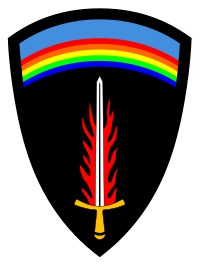
 SHAEF headquarters had been reading the most secret German signals communications and realized that Hitler, instead of allowing his forces to retreat to a defensible position, was about to counterattack at Mortain. This provided SHAEF the opportunity to surround and trap most of the German Army Group B south of the Seine River.
SHAEF headquarters had been reading the most secret German signals communications and realized that Hitler, instead of allowing his forces to retreat to a defensible position, was about to counterattack at Mortain. This provided SHAEF the opportunity to surround and trap most of the German Army Group B south of the Seine River.

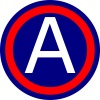 On August 13, however, as the Canadian 1-A and US 3-A were approaching each other to close the trap, Gen Bradley halted Patton’s forces. Several days later, the trap closed, but the delay allowed many of the German troops to escape north across the Seine. A second attempt to destroy German Army Group B (Gen Erwin Rommel), by trapping it against the Seine River, also, failed. Nevertheless, the Allies had largely destroyed the German 5.Panzer-Army (Gen Leo Geyr von Schweppenburg) and the 7.Army (Gen Friedrich Dollmann). On the morning of August 15, the second Allied invasion struck, not at Calais, but along the French Riviera.
On August 13, however, as the Canadian 1-A and US 3-A were approaching each other to close the trap, Gen Bradley halted Patton’s forces. Several days later, the trap closed, but the delay allowed many of the German troops to escape north across the Seine. A second attempt to destroy German Army Group B (Gen Erwin Rommel), by trapping it against the Seine River, also, failed. Nevertheless, the Allies had largely destroyed the German 5.Panzer-Army (Gen Leo Geyr von Schweppenburg) and the 7.Army (Gen Friedrich Dollmann). On the morning of August 15, the second Allied invasion struck, not at Calais, but along the French Riviera.
Although the German forces in the west had been thoroughly defeated, Hitler, from his headquarters hundreds of miles away, issued orders to defend the Seine River and later the Marne River, as if the defeat in Normandy had not taken place.
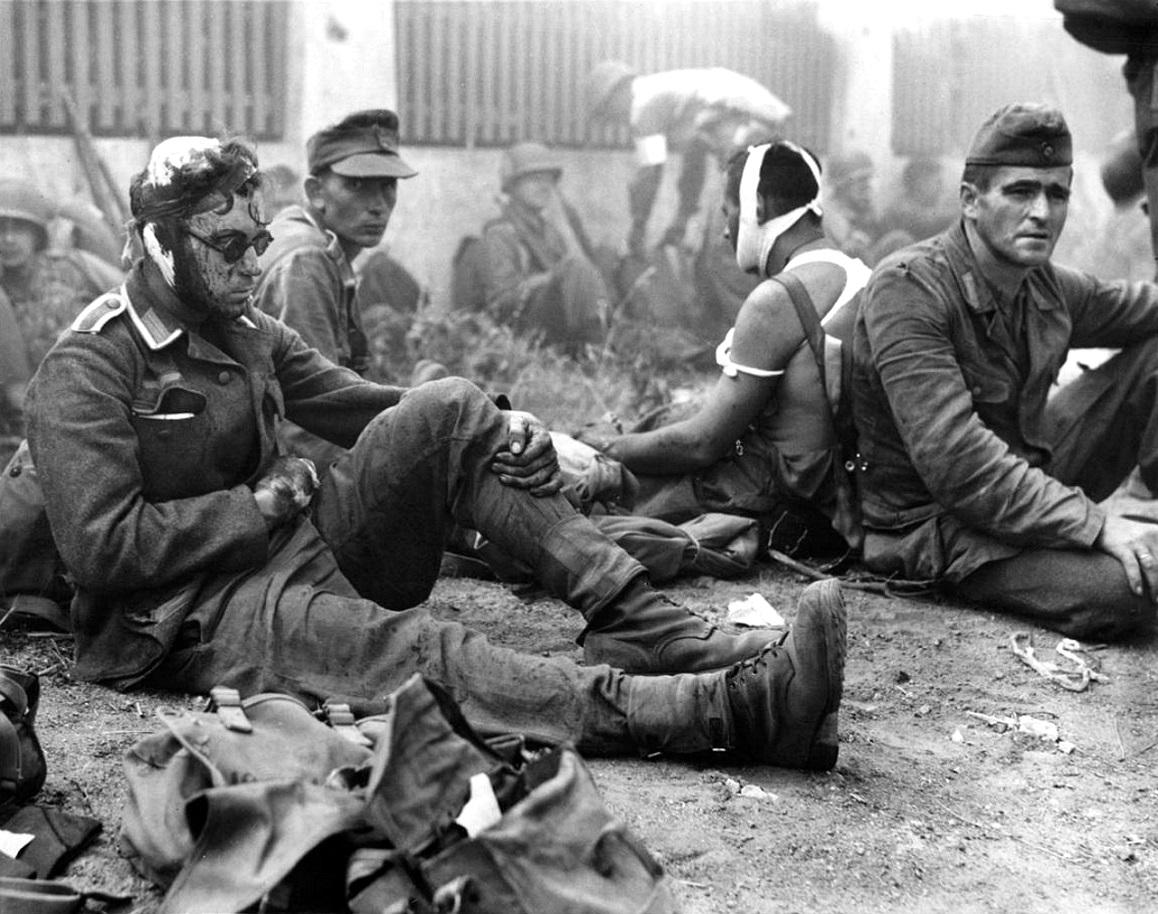 He did, however, allow the German forces in southern France to withdraw north, which made possible their escape. For the German commanders and troops, each day was a struggle to survive. Faced with total Allied air superiority, the remnants of the German Army could move freely only at night or in rain or fog.
He did, however, allow the German forces in southern France to withdraw north, which made possible their escape. For the German commanders and troops, each day was a struggle to survive. Faced with total Allied air superiority, the remnants of the German Army could move freely only at night or in rain or fog.
To their rear, the French Resistance had risen in arms and posed a real threat to any German force smaller than a company. On paper, German commanders still acted as if they were obeying Hitler’s orders, but in actuality, they were simply trying to save what was left of their battered formations. They marched east, mostly at night, taking shelter behind the successive river lines in northern France, hoping to get back to Germany. The Allied commanders, like their German counterparts, fully understood the magnitude of the German defeat in Normandy. The only question remaining was how to exploit the situation.
![]()
 For the US 7-A that had invaded southern France, this was rather simple, it would advance north up the Rhone River valley. Gen Eisenhower reexamined the pre-invasion planning and decided to exploit the advance beyond the Seine River. He directed the 21-AG to advance northeast through Belgium and directed Bradley’s 12-AG to protect the 21-AG’s southern flank. Gen Patton’s 3-A launched a subsidiary offensive due east towards Nancy and Metz. Both the western Allies and the Germans expected the war to end within weeks. The only shadow on the horizon was the possibility that the Allied system of logistical support would halt their triumphant procession to the east.
For the US 7-A that had invaded southern France, this was rather simple, it would advance north up the Rhone River valley. Gen Eisenhower reexamined the pre-invasion planning and decided to exploit the advance beyond the Seine River. He directed the 21-AG to advance northeast through Belgium and directed Bradley’s 12-AG to protect the 21-AG’s southern flank. Gen Patton’s 3-A launched a subsidiary offensive due east towards Nancy and Metz. Both the western Allies and the Germans expected the war to end within weeks. The only shadow on the horizon was the possibility that the Allied system of logistical support would halt their triumphant procession to the east.

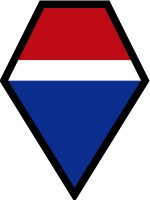 By August 15, the SFHQ had deployed only two Jedburgh teams in northern France in front of the advancing 12-AG. Nine more teams were soon to follow. Recent experience in Brittany demonstrated that US Army field commanders were particularly impressed with the help of the FFI guides and scouts. Therefore, most of the Jedburgh teams sent into northern France were instructed to be prepared to send the FFI volunteers to meet the advancing field armies. SHAEF possessed abundant supplies to be parachuted to the SOF forces, but with resistance groups springing into action all across France, the limited air assets could not provide immediate delivery. The SFHQ briefing officers informed most Jedburgh teams that deployed in northern France that it would take eight days for them to receive supply drops.
By August 15, the SFHQ had deployed only two Jedburgh teams in northern France in front of the advancing 12-AG. Nine more teams were soon to follow. Recent experience in Brittany demonstrated that US Army field commanders were particularly impressed with the help of the FFI guides and scouts. Therefore, most of the Jedburgh teams sent into northern France were instructed to be prepared to send the FFI volunteers to meet the advancing field armies. SHAEF possessed abundant supplies to be parachuted to the SOF forces, but with resistance groups springing into action all across France, the limited air assets could not provide immediate delivery. The SFHQ briefing officers informed most Jedburgh teams that deployed in northern France that it would take eight days for them to receive supply drops.
German Rear Area Administration and Security
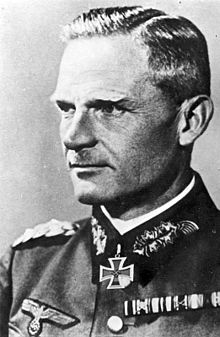 For the most part, the Jedburgh teams would not encounter German main force combat units, but rather the rear area security administration and supply units of the Military Governor of France (Gen.d Infanterie Carl-Heinrich Rudolf Wilhelm von Stülpnagel), the military government directly responsible to the German Army High Command. The German security forces observed a noticeable increase in French Resistance activity early in 1944, particularly in nocturnal English parachute drops of arms. As early as January and February, the Military Governor of France reported that his major effort was devoted to fighting the French Resistance with his security units, East Battalions (composed of Russians) and military police. By May, there was increased resistance activity in Brittany, which had earlier been rather quiet. The Germans believed that the major resistance activity was Communist-inspired and centered in southeast France and Dordogne. German security forces knew the basic organization of the resistance, its radio links to London, and its mission to prepare for and assist the coming Allied invasion of France. They also concluded that the majority of the population sympathized with and provided support to the resistance. Furthermore, French police and security forces, for the most part, were merely going through the motions of tracking down the resistance and in some instances assisted the resistance.
For the most part, the Jedburgh teams would not encounter German main force combat units, but rather the rear area security administration and supply units of the Military Governor of France (Gen.d Infanterie Carl-Heinrich Rudolf Wilhelm von Stülpnagel), the military government directly responsible to the German Army High Command. The German security forces observed a noticeable increase in French Resistance activity early in 1944, particularly in nocturnal English parachute drops of arms. As early as January and February, the Military Governor of France reported that his major effort was devoted to fighting the French Resistance with his security units, East Battalions (composed of Russians) and military police. By May, there was increased resistance activity in Brittany, which had earlier been rather quiet. The Germans believed that the major resistance activity was Communist-inspired and centered in southeast France and Dordogne. German security forces knew the basic organization of the resistance, its radio links to London, and its mission to prepare for and assist the coming Allied invasion of France. They also concluded that the majority of the population sympathized with and provided support to the resistance. Furthermore, French police and security forces, for the most part, were merely going through the motions of tracking down the resistance and in some instances assisted the resistance.
The number of French who willingly provided information to the Germans was actually quite small and presumably known to the resistance. German security soon began to form the image of French Communists, professionals, former army officers, and students lined up shoulder to shoulder against the occupation force.
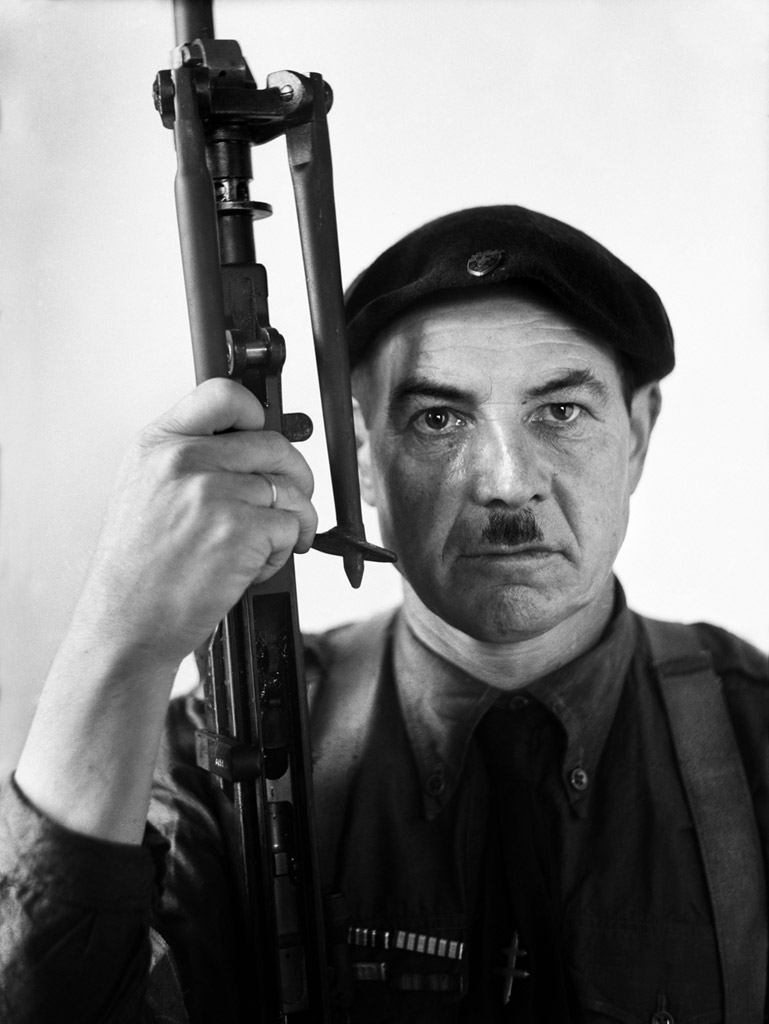 The Third Reich considered all resistance activity to be terrorism, which was to be met with counter-terrorism: shootings, illegal arrests, and torture. To assist in the more unspeakable aspects of this policy, the SS provided Gestapo (Geheim Stadt Polizei) and other security offices in the larger cities across France.
The Third Reich considered all resistance activity to be terrorism, which was to be met with counter-terrorism: shootings, illegal arrests, and torture. To assist in the more unspeakable aspects of this policy, the SS provided Gestapo (Geheim Stadt Polizei) and other security offices in the larger cities across France.
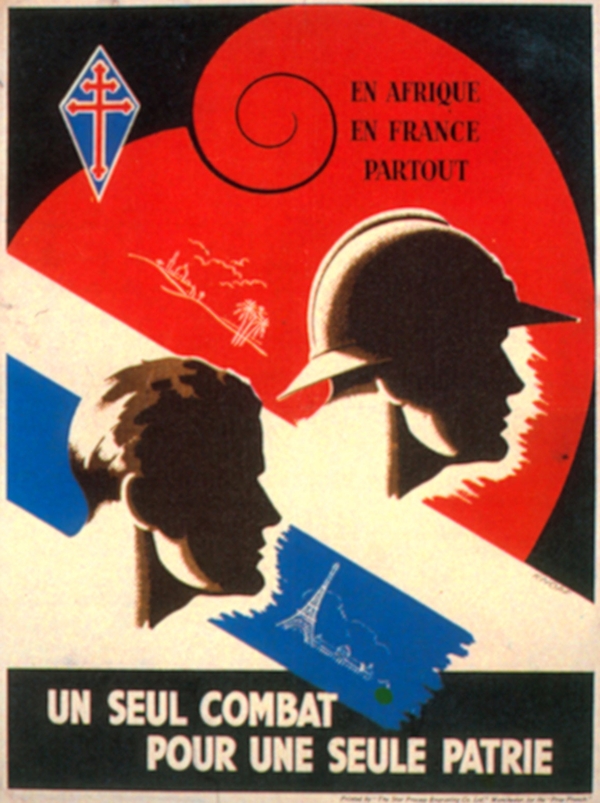 Besides the garrison of Paris, the Military Governor of France divided France into four sectors, each with a military commander: northwest, northeast, southwest, and south. Each military commander possessed basically one Feldkommandantur headquarters for each French department, usually commanded by a colonel or brigadier general and from 2000 to 3000 personnel. Most of that personnel, however, were administrators and sometimes civilians or women. The sector military commanders also possessed several security regiments and on occasion one or two East Battalions.
Besides the garrison of Paris, the Military Governor of France divided France into four sectors, each with a military commander: northwest, northeast, southwest, and south. Each military commander possessed basically one Feldkommandantur headquarters for each French department, usually commanded by a colonel or brigadier general and from 2000 to 3000 personnel. Most of that personnel, however, were administrators and sometimes civilians or women. The sector military commanders also possessed several security regiments and on occasion one or two East Battalions.
The Jedburgh teams we shall examine in this study jumped into the sectors of either the Military Governor of Northwest France or Military Governor of Northeast France, the former’s headquarters located at Paris and the latter’s in Dijon. The experience of the Chaumont garrison indicated the inherent dilemmas of the German situation. The Feldkommandantur 769 governed the Haute-Marne Department in northeastern France from the city of Chaumont and maintained a smaller headquarters (Aussenstelle) in Langres. One of its senior civil servants, a Dr. Achten, observed that Chaumont remained quiet and orderly through, the German occupation.
Since early August, the headquarters was responsible for constructing defenses behind the Marne River, its sector of the Kitzinger Line. Dr. Achten reported that about 60 percent of the French males in the area helped construct the fortifications and assisted the Germans in moving livestock and grain north of the Marne. He noted that the only difficulty was a tendency of the German vehicles to break down. It would appear that as long as the area appeared quiet and orderly, the German occupation forces were satisfied.
In reality, the forced laborers along the Marne sabotaged both the German motor vehicles and fortification efforts. Many of those same workers weeks later helped guide the US 3-A units through and around the Kitzinger Line. In addition, by August 1944, the German occupation forces really did not want to know what was happening in the countryside. The threat of FFI ambushes led the occupation forces to send only large armed groups outside their garrison. In August 1944, there were vast stretches of France, particularly in the south, virtually unobserved by the Germans.



